#turkish food singapore
Explore tagged Tumblr posts
Text
Turkish Delights and Lebanese food Wonders: A Gastronomic Adventure

The allure of Turkish and Lebanese cuisine lies only in the vibrant flavors that dance on the taste buds but also in the rich history and cultural tapestry woven into every dish. Embark on a gastronomic adventure as we delve into the unique benefits that make these culinary traditions stand out.
Benefits of Turkish food:
Diverse Flavors, One Table:
Imagine a table adorned with an array of colors, textures, and aromas. Turkish and Lebanese cuisines are celebrated for their ability to bring together a diverse range of flavors harmoniously. From the savory delights of kebabs and koftas to the freshness of tabbouleh and fattoush, each dish is a testament to the fusion of spices and ingredients.
Healthful Mediterranean Staples:
Both Turkish and Lebanese cuisines are rooted in the heart-healthy traditions of the Mediterranean diet. Olive oil, fresh vegetables, lean proteins, and an abundance of herbs and spices form the foundation of many dishes, offering a balance that not only tantalizes the taste buds but also contributes to overall well-being.
The Art of Meze:
A standout feature of both cuisines is the concept of mezze — a selection of small, flavorful dishes served as appetizers or snacks. This is only allows for a variety of tastes in one sitting but also encourages a communal and social dining experience. The benefits extend beyond the palate, fostering a sense of connection and conviviality.
Balancing Act:
Turkish and Lebanese dishes often strike a perfect balance between sweet and savory, soft and crunchy, hot and cold. This careful equilibrium not only enhances the dining experience but also reflects the intricate balance sought in the broader aspects of life.
Super food Showcases:
Many traditional ingredients used in Turkish and Lebanese cuisine boost super food status. Take, for instance, pomegranates, a common feature in both cuisines. Bursting with antioxidants, they add a refreshing twist to salads, dips, and even main courses, elevating not only the taste but also the nutritional profile of the meal.
Herbs and Spices for Wellness:
The vibrant and aromatic herbs and spices that characterize Turkish and Lebanese cooking do more than just add flavor. Ingredients like mint, parsley, cumin, and sumac are known for their potential health benefits, ranging from aiding digestion to providing anti-inflammatory properties.
Culinary Time Travel:
One of the unique benefits of indulging in Turkish and Lebanese cuisine is the opportunity to embark on a journey through time. Many recipes have been passed down through generations, preserving ancient culinary techniques and ensuring that each bite carries a piece of history.
Vegetarian Delights:
For those inclined towards a vegetarian or plant-based diet, Turkish and Lebanese cuisines offer an abundant array of options. Dishes like falafel, lentil soups, and stuffed grape leaves showcase the versatility of plant-based ingredients, providing a wholesome and satisfying experience.
Turkish Coffee Rituals:
Beyond the savory realm, the ritual of Turkish coffee introduces a unique benefit — the art of slowing down. Enjoying a cup of meticulously brewed Turkish coffee is more than a caffeine fix; it’s a moment of reflection, conversation, and connection with the rich cultural heritage.
Final thoughts
In the end, the benefits of immersing oneself in the culinary wonders of Turkish and Lebanese go far beyond the flavors on the plate. It’s a journey through history, a celebration of diversity, and an exploration of the intricate connections between food, culture, and well-being. So, let the tantalizing aromas��and vibrant colors of Turkish and Lebanese cuisine be your guide on this gastronomic adventure — a feast for the senses and the soul.
#popular turkish restaurant#Turkish Menu Clarke quay#best turkish food#Authentic Turkish food#popular turkish restaurant in Singapore#best turkish food in Singapore#turkish food#grand konak restaurant#turkish food singapore#grand konak singapore
0 notes
Text

Cheesy. Crispy. Milky. Sweet. Savoury.
Kunefe.
#food photography#singapore#travel#foodie#photography#foodporn#food blog#foodphotography#travel blog#meditteranean#middle eastern#kunefe#arab#dessert#cappadocia#cappadocia restaurant singapore#turkish#turkiye#turkish desserts#first time
0 notes
Text

Delight in a Healthy Tabbouleh Salad at Pasha Turkish Restaurant
#singapore#tasty#turkish#delcious#tabboulehsald#singapore restaurant singaporefood pashaturkishrestaurantmezzaandgrill singaporefood delicious delivery restaurant dinner food bestturkishf#bestresturant
0 notes
Text
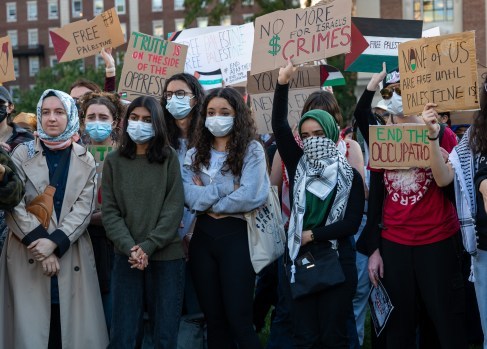
So much for the idea that if women were in charge the world would be a much kinder and less violent place.

Peruse campus literature. Watch clips from university protests. Scan interviews with pro-Hamas protestors. Read the chalk propaganda sketched on campus sidewalks. Talk to raging students in the free speech area. And the one common denominator— besides their arrogance—is their abject ignorance. Take their following tired talking points:
“Refugees”
We are told that the Palestinians after more than 75 years of residence in the West Bank and Gaza are “refugees.” If that definition were currently true, then, are the 900,000 Jews who were forcibly exiled from Muslim countries in the Middle East, North Africa, and Asia after the 1947, 1956, 1967 wars still “refugees?”
Most fled to Israel. Do they now live in “refugee” camps administrated by the UN? Are they protesting to recover their confiscated homes and wealth in Damascus, Cairo, or Baghdad? Do Jews on Western television dangle their keys to lost homes in Damascus a half-century after they were expelled?
How about the 150,000-200,000 Greek Cypriots who in 1974 were brutally driven out of their ancient homes in Northern Cyprus? Are they today living in “refugee” camps in southern Cyprus? Are Cypriot terrorists blowing themselves up in “occupied” Nicosia to recover what was stolen from them by Turkey?
Turkish president Recep Erdogan lectures the world on Palestinian “refugees,” but does he mention Turkey’s role in the brutal expulsion of 40 percent of the residents of Cyprus?
Are there campus groups organizing against Turkey on behalf of the displaced Cypriots? After being slaughtered and expelled, are the Cypriots a cause celebre in academia? Do the “refugee” cities of southern Cyprus resemble Jenin or Jericho?
For that matter, how about the 12 million German civilians who between 1945-50 were expelled, and mostly walked back from, East Prussia and parts of Eastern Europe, some with Prussian roots going back a millennium and more. Perhaps 1 million died during the expulsions.
Are any current survivors still “refugees?” If so, are they organizing for war to get back “occupied” “Danzig” and “Königsberg” for Germany? So why does the world damn Israel and romanticize the Palestinians in a way it does not with any other “refugee” group?
“Apartheid”
Israel is said to practice “apartheid,” although since 2005-06 Gaza has been autonomous. Mahmoud Abbas runs in his fashion the West Bank. Like the Hamas clique, he held elections one time in 2005, and then after his election, of course, cancelled any free election in the fashion of the one election, one time Middle East. Who forced him to do that? Zionists? Americans?
At any time, Gaza could have taken its vast wealth in annual foreign aid and become completely independent in fuel, food, and energy, without need of any such help form the “Zionist entity.”
Gaza could have capitalized on its strategic location, the world’s eagerness to help, and the natural beauty of its Mediterranean beaches. Instead, it squandered its income on a labyrinth of terrorist tunnels and rockets. Today, it snidely snickers at any mention of following the Singapore model of prosperity–a former colonial city whose World War II death count vastly surpassed that of the various wars over Gaza.
Are the Israeli Arabs—21 percent of the Israeli population—living under apartheid?
If so, it is a funny sort of oppression when they vote, hold office, form parties, and enjoy more freedom and prosperity than almost anywhere else in the Middle East under Arab autocracies. Are those in sympathy with Hamas fleeing from Israel into Gaza or the West Bank or other Arab countries to live with kindred Muslims under an autocratic and theocratic dictatorship, or do they prefer to stay in the “Zionist entity” under “apartheid?”
Where then is real apartheid?
The Uyghurs in China, fellow Muslims to Middle Easterners, who are ignored by Israel’s Islamic enemies, but who reside in China’s segregated work camps to the silence of the usually loud UN, EU, and Muslim world?
How about the Muslim Kurds? Are they second- or third-class citizens in Muslim Turkey? And how about the tens of thousands of foreign workers from India, Pakistan, and other Asian countries who labor under the kafala system in the Arab Muslim Gulf countries, and are subject to apartheid protocols that allow them no free will about how they live, travel, or the conditions of their labor?
Are campuses erupting to champion the Uyghurs, the Kurds, or the subjugated workers of the Gulf?
“Disproportionate”
Israel is now damned as “disproportionally” bombing Gaza. The campus subtext is that because Gaza’s 7,000-8,000 rockets launched at Israeli civilians have not killed enough Jews, then Israel should not retaliate for October 7 by bombing Hamas targets–shielded by impressed civilians— because it is too effective.
Would a “proportionate” response be counting up all the Israelis murdered, categorizing the horrific manner of their deaths, and then sending Israeli commandoes into Gaza during a “pause” in the fighting to murder an equal number of Gazans in the same satanic fashion?
Does the U.S. lecture Ukraine not to use to the full extent its lethal U.S. imported weaponry since the result is often simply too deadly? After all, perhaps twice as many Russians have been killed, wounded, or are missing than Ukrainian casualties. Should Ukraine have been more “proportionate?” Has President Biden ordered President Zelensky to offer the Russian aggressors a “pause” in the fighting to end the “cycle of violence?”
Or did U.S.-supplied artillery, anti-armor weapons, drones, and missiles “disproportionally” kill too many Russians? Or does the U.S. assume that since Russia attacked Ukraine at a time of peace, it deserves such a “disproportionate” response that alone will lose it the war?
For that matter, the U.S. certainly disproportionately paid back Japan for Pearl Harbor, and the Japanese brutal take-over of the Pacific, much of Asia, and China—and the barbarous way the Japanese military slaughtered millions of civilians, executed prisoners, and mass raped women. Should the U.S. have simply done a one-off retaliatory attack on the imperial fleet at Yokohama, declared a “cease-fire,” and thus ended the “cycle of violence?”
Civilian casualties
Campus activists scream that Israel has slaughtered “civilians” and is careless about “collateral damage.” They equate retaliating against mass murderers who use civilians to shield them from injury, while warning any Gazans in the region of the targeted response to leave, as the moral equivalent of deliberately butchering civilians in a surprise attack.
So did protestors mass in the second term of Barrack Obama when he focused on Predator drone missions inside Somalia, Pakistan, and Yemen to go after Islamic terrorists who deliberately target civilians?
At the time, the hard-left New York Times found the ensuing “collateral damage” in civilian deaths merely “troubling.” No matter—Obama persisted, insisting as he put it, “Let’s kill the people who are trying to kill us.” Note Obama did not expressly say the terrorists in Pakistan or Yemen were killing Americans, but “trying” to kill Americans. For him, that was, quite properly, enough reason “to kill” the potential assassins of Americans.
What would the Harvard President today say of Benjamin Netanyahu saying just that about Hamas?
We have no idea how many women, children, and elderly were in the general vicinity of a targeted terrorist in Pakistan or Yemen when an American drone missile struck. Then CIA Director John Brennan later admitted that he had lied under oath (with zero repercussions), when he testified to Congress that there was no collateral damage in drone targeted assassinations.
Obama was proud of his preemptive assassination program. Indeed, in lighthearted fashion he joked at the White House Correspondence Dinner about his preference for lethal drone missions, when he “warned” celebrities not to date his daughters: “But boys, don’t get any ideas. I have two words for you, ‘predator drones.’ You will never see it coming. You think I’m joking.”
Did the campuses erupt and scream “Not in my name” when their president laughed about his assassination program? After all, Obama had also admitted, “There is no doubt that civilians were killed who shouldn’t have been.” Did he then stop the targeted killings due to collateral damage—as critics now demand a cease fire from Israel?
“Genocide”
Genocide is now the most popular charge in the general damnation of Israel, a false smear aimed at calling off the Israeli response to Hamas, burrowed beneath civilians in Gaza City.
But how strange a charge! Pro-Hamas demonstrators the world over chant “From the River to the Sea,” unambiguously calling for the utter destruction of Israel and its 9 million population. Are the Hamas supporters then “genocidal?”
Is genocide the aim of Hamas that launched over 7,000 rockets into Israeli cities without warning? What is the purpose of the purportedly 120,000 rockets in the hands of Hezbollah if not to target Israeli noncombatants? Is all that a genocidal impulse?
Do Hamas and Hezbollah drop leaflets to civilians, as does Israel, to flee the area of a planned missile attack—or is that against their respective charters?
Hamas leaders in Qatar and Beirut continue to give interviews bragging about their October 7 surprise mass murdering of civilians. They even promise more such missions that likewise will be aimed at beheading, torturing, executing, incinerating, and desecrating the bodies of hundreds of Jewish civilians, perhaps again in the early morning during a holiday and a time of peace.
Is that planned continuation of mass killing genocidal? Does the amoral UN recall any other mass murdering spree when the killers beheaded infants, cooked them in ovens, and raped the dead?
Perhaps students at Harvard, Yale, Cornell, and Stanford will protest the real genocide in Darfur where some half-million black African Sudanese have been slaughtered by mostly Muslim Arab Sudanese. Did the Cornell professor who claimed he was “exhilarated” on news of beheaded Jewish babies protest the slaughter of the Sudanese? Did the current campus protestors ever assemble to scream about the Islamists who slaughtered the indigenous Africans of Sudan?
Are professors at Stanford organizing to refuse all grants and donations that originate from communist China? Remember, the Chinese communist Party has never apologized for the party’s genocidal murder of some 60-80 millions of its own during the Maoist Cultural Revolution, much less its systematic efforts to eliminate the Uyghur Muslim population?
These examples could easily be expanded. But they suffice to remind us that the Middle-East and Western leftist attacks on Israel for responding to the October 7 mass murdering are neither based on any consistent moral logic nor similarly extended to other nations who really do practice apartheid, genocide, and kill without much worry about collateral damage.
So why does the world apply a special standard to Israel?
To the leftist and Islamist, Israel is guilty of being: 1) Too Jewish; 2) Too prosperous, secure, and free; 3) Sufficiently Western to meet the boilerplate smears of colonialist, imperialist, and blah, blah, blah.

27 notes
·
View notes
Note
hiiii, I am travelling to Singapore for the Grand Prix this year and was wondering if you had any recs of things I should do while I’m there? 🩷
helloooooo omg how fun!! I love the Singapore GP it's really fun and it's such an accessible circuit. Tbh I'm the worst person to ask because a) i love niche boring stuff b) the only things my friends and I do in Singapore is eat and hang out because that IS the national past time but let me see hmmmm
I'll just recommend some stuff that's not like. Gardens by the Bay. Sentosa. Universal Studios. The Zoo. All VERY nice places tbh and highly recommend but these are just some tiny Nadia-based reccs that you might not get from a google-able list I guess?? If you're here for a short time and you're only at the Marina Bay Sands/CBD area that's totally fine but just know that that IS the most expensive area of Singapore.
Well if you're here for a while and you're a history person I'd recommend going to the National Museum and then right down the road from there is Peranakan Museum which is tiny but fun. The National Museum is one of my favourite buildings in Singapore I just think it's so beautiful. And if you REALLY like history and museums I'd super recommend the Asian Civilisations Museum which is criminally underrated imo. If you're staying near the circuit the National Gallery is literally right there you can even pop in in the morning before the race, there's some really good local and southeast asian art in there if that's your thing.
My personal favourite place to have a wander is the Botanic Gardens. If you're a picnic person just grab some bits and bobs from Cluny Court (Plain Vanilla cupcakes are soooo good. And there's another really good bakery on the second floor) and have a nice picnic and stroll in the garden. It's pretty massive so make sure you know what you're getting into. Do NOT go on a weekend. That's crucial.
The whole Kampong Glame/Arab Street/Haji Lane is a vibe 100%. Get some boba from PlayMade, get some teh sarbat from the old man that's been serving tea there forever. There's this really good burger place like right near the mosque it's called Mahmud's Tandoor I'm obsessed with it. DO NOT let the Turkish restaurants hassle you be strong! There's some thrift stores there too but it's mostly like really good food, really nice art. The Malay Cultural Centre is like a really nice space too if you need a break.
If you want local food I'd rather you go to Maxwell's then Lau Pa Sat I actually HATE Lau Pa Sat it's theeee definition of a tourist trap. Newton Food Centre which is where they filmed that scene in Crazy Rich Asians is like fine too if you're looking for local food. If you want LOCAL LOCAL come to Al Azhar at Bukit Timah because I'm literally telling people that the steamboat fish that's there is Michellin star good. That's also a good frog porridge place down the road if you're feeling adventurous.
And my last recc is the Tiong Bahru area which is the area I used to work at. If you want cute little souvenirs or local bits and bobs there's a very cute store called Cat Socrates that I buy everything from. The Plain Vanilla there is also BEAUTIFUL it's my favourite cafe to work at. There's also like beautiful street art all along the whole area so it's just nice to walk around cause it's all just nice shophouses and art. And then there's Tiong Bahru Market which has some of the best local food. Go in the morning for this.
If you want like fancy food recs that aren't local food but are like actually good and not a scam, my personal favs are Miznon on Stanley Street, Ms Maria and Mr Singh, Five Oars Coffee Roasters on Upper East Coast. Oooh if you go to Neptune on East Coast Road you can see the pretty Peranakan buildings.
UHM YEAH! Singapore is really beautiful but VERY warm please bring sunscreen. PLEASEEEE venture outside the circuit area if you have the time because while that area is gorgeous I just think places like Haji Lane, or Tiong Bahru, or Bukit Timah, or East Coast Road are just so much more local. (Any Singaporeans reading this you know what I mean la. Nice Local. I'm not gonna recommend them to go to the coffee shop downstairs your house k)
#and don't eat rice with a fork that's really strange#I hope this is at all helpful??? if you want like more specific things/areas let me know or you can DM or whatever hahaha#ALSO BAUKE IF YOU SEE THIS I NEED TO REPLY YOUR INSTAGRAM MESSAGE BUT THESE ARE GOOD RECCS TOO#love singapore it's very safe feel free to walk the streets at 3am. 24h Fairprice Finest at 3am is the place to be#asks
17 notes
·
View notes
Text
Singapore Synopsis
Just when I got comfortable using the MRT and adjusted to walking on the left side, my time in Singapore has come to an end.
While my previous post mentioned bright, sunny weather, it ended up raining a lot while I was here. Fortunately there are many covered walkways and indoor activities so I was still able to get around the city and have a good experience. The rain also made the temperature cooler so that was actually a plus.
While looking to stay dry I ended up walking through several shopping centers. I’m not much into shopping but I actually really enjoyed walking around the shopping centers here and spent hours doing so. I think nearly every brand on the earth is available. I would definitely recommend Singapore for any shopaholics out there, it is a shopping paradise here.
I also hit a lot of the main spots around the city. I went to Arab Street where there are many colorful buildings and the landmark Sultan Mosque. I got some very delicious Turkish food from a restaurant ran by a very lovely old man who gave me complimentary mint tea. The kindness of strangers has definitely been a consistent highlight so far in my study abroad experience. From there I was easily able to walk to Little India where there was even more colorful buildings.

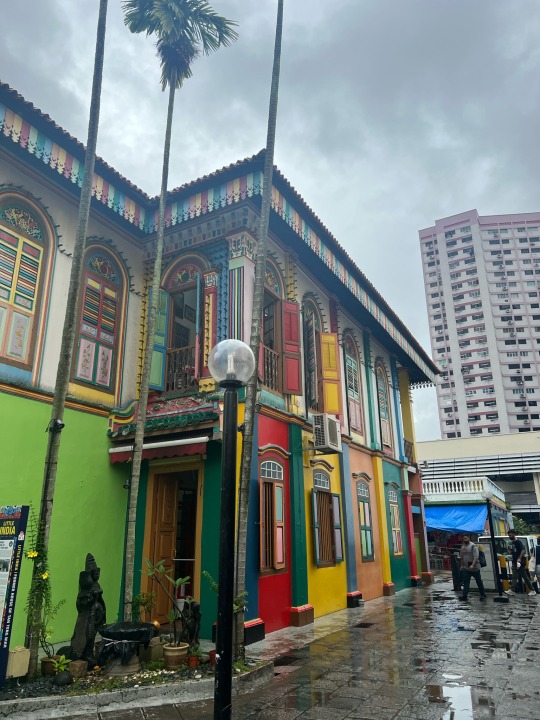
I also made it to Chinatown. Because of the New Year it was decorated and bustling with people. I actually ended up there several times because it was such a hopping place. My friends took me to a Hawker center there where I had the best fried rice I have ever had. Hawker centers are the best places to go in Singapore for good, cheap food. My friends and I also went there for New Years Eve, as there were special dance and music performances and a countdown. Chinatown and celebrating CNY was definitely one of the highlights of my trip.
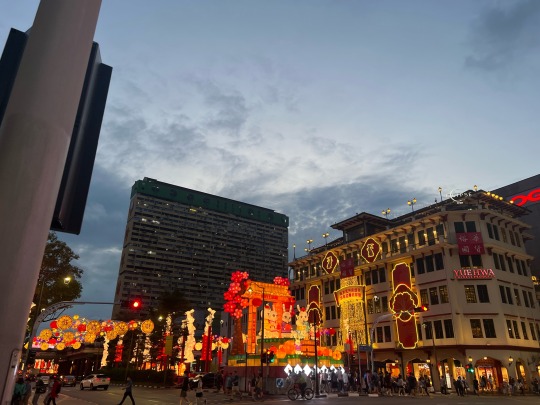

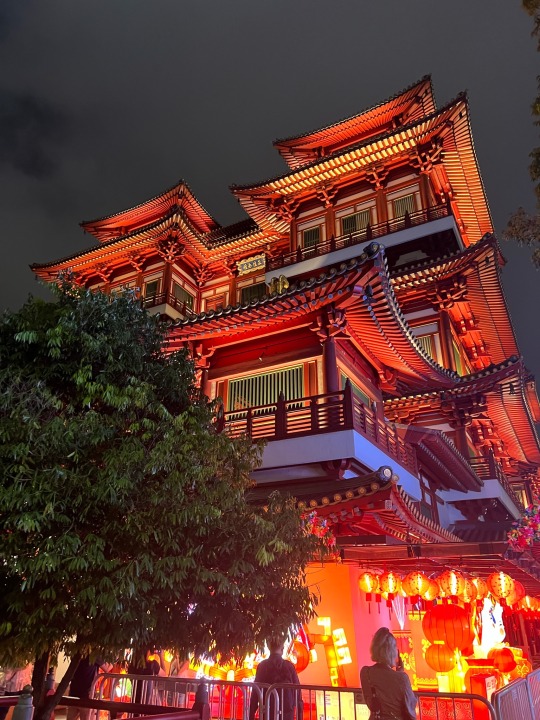

Of course a trip to Singapore is not complete without visiting the Marina Bay. Most pictures you’ve seen of Singapore probably come from this area. I accompanied my friends to Gardens by the Bay, as they had not yet been there either. We walked through the Flower Dome where there was a CNY display, and the Cloud Forest where there was an Avatar display. Admission for both was a total of about $40USD, which I found worth it for the special exhibits. We also went to the Supertree Grove where there was a free CNY fair set up with lanterns and food stalls. We also walked around the Marina Bay, which is beautiful at night. I have so many great photos, but alas the tumblr app has a limit so here’s a select few:
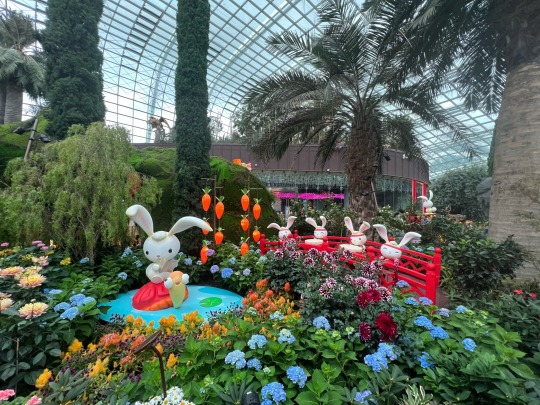



Overall Singapore was an unforgettable experience. I don’t know when I’ll get a chance to go back but I absolutely want to return someday. My travels will continue as I still have a lot more time off of class (my USC friends in Singapore were jealous as they only got a long weekend for the New Year), so keep a look out for my next update!
3 notes
·
View notes
Text
Discover Arab Street in Singapore: The Ultimate Guide for Travelers and Locals
Arab Street in Singapore is a vibrant enclave brimming with rich history, culture, and an eclectic mix of shops and eateries. Whether you're a traveler seeking unique experiences or a local looking to explore, Arab Street in Singapore offers something for everyone. This guide will walk you through the best places to visit, things to buy, places to eat, the best time to visit, and how to reach Arab Street, making it one of the top places to visit in Singapore that everyone should explore!
History and Significance

Arab Street is part of the larger Kampong Glam area, which has been a center of Muslim life in Singapore since the early 19th century. The neighborhood was originally allocated to the Malay and Muslim communities by Sir Stamford Raffles. Today, it retains its cultural significance while also embracing a modern, cosmopolitan vibe.
Places to Visit
Sultan Mosque: Begin your exploration with a visit to the majestic Sultan Mosque, one of the most iconic landmarks in Singapore. The mosque's stunning golden dome and impressive architecture are a testament to the area's rich heritage.
Haji Lane: Just around the corner from Arab Street, Haji Lane is famous for its narrow alleys filled with colorful murals, quirky boutiques, and trendy cafes. It's a haven for photographers and street art enthusiasts.
Malay Heritage Centre: Learn about the history and culture of the Malay community at the Malay Heritage Centre. The museum offers fascinating exhibits and interactive displays that provide insight into the heritage of Kampong Glam.
Bussorah Street: A pedestrianized street lined with palm trees, Bussorah Street is home to numerous shops and restaurants. It's a great place to wander, shop for souvenirs, and enjoy a meal with a view of the Sultan Mosque.
Things to Buy

Arab Street is a shopper's paradise with a diverse range of items that reflect both traditional and modern influences.
Textiles and Fabrics: Arab Street is renowned for its beautiful textiles and fabrics. You'll find shops selling everything from colorful batiks to luxurious silks and intricate lace.
Carpets and Rugs: Explore the numerous carpet and rug shops offering exquisite Persian and Turkish designs. These high-quality items make for perfect home decor pieces.
Perfumes and Oils: The street is dotted with stores selling exotic perfumes and essential oils. These fragrant treasures are often made from traditional recipes and are a unique find.
Handicrafts and Souvenirs: From handmade jewelry and traditional Malay crafts to contemporary accessories, Arab Street offers a wide variety of souvenirs to take home.
Places to Eat

Arab Street is a culinary hotspot with a diverse array of dining options to suit all tastes.
Beirut Grill: Savor the flavors of the Middle East at Beirut Grill, which offers a delectable menu of Lebanese and Mediterranean dishes. The ambiance is warm and inviting, making it a great spot for a meal with friends or family.
Alaturka: Enjoy authentic Turkish cuisine at Alaturka, where you can indulge in dishes like kebabs, mezze, and baklava. The restaurant's charming decor adds to the dining experience.
I Am... Cafe: For a fusion dining experience, head to I Am... Cafe. This halal eatery serves a mix of Western and Asian dishes, including their famous rainbow cake and hearty burgers.
Zam Zam: A local favorite, Zam Zam is known for its delicious murtabak (stuffed pancake) and nasi biryani. It's a must-visit for anyone wanting to try authentic Singaporean Muslim food.
Best Time to Visit

The best time to visit Arab Street is in the late afternoon to evening when the weather is cooler and the street comes alive with lights and activity. Weekends are particularly vibrant, with more street performances and events. Avoid visiting during the midday heat if possible, as the narrow streets can become quite warm.
How to Reach
Arab Street is conveniently located in the Kampong Glam area and is easily accessible by public transport.
By MRT: The nearest MRT stations are Bugis (East-West Line) and Nicoll Highway (Circle Line). From either station, it's a short walk to Arab Street.
By Bus: Several bus routes pass through the Kampong Glam area. You can take buses that stop at the nearby Sultan Mosque or Beach Road.
By Taxi or Grab: Taxis and Grab (ride-hailing service) are widely available in Singapore and can drop you off directly at Arab Street.
Conclusion

Arab Street in Singapore is a cultural and sensory delight, offering a unique blend of history, shopping, dining, and vibrant street life. Whether you're interested in exploring its rich heritage, indulging in delicious cuisine, or simply soaking in the colorful atmosphere, Arab Street is undoubtedly one of the top places to visit in Singapore. Make sure to include this vibrant destination in your travel itinerary for an unforgettable experience.
0 notes
Text
The Best Airlines for Food and Beverage Service
Book cheap flight tickets and hotels- https://trailtravelz.com/
When it comes to air travel, the quality of food and beverage service can significantly impact the overall experience for passengers. Airlines have been increasingly focusing on enhancing their culinary offerings to cater to diverse tastes and preferences, turning inflight dining into a distinguishing factor. From gourmet meals to special dietary options, here’s a look at some of the best airlines known for their exceptional food and beverage service.
1. Singapore Airlines Singapore Airlines consistently ranks at the top for its inflight dining experience. Known for collaborating with world-renowned chefs and offering a wide range of menu options, Singapore Airlines ensures that every passenger enjoys a culinary journey. Whether you’re flying in First Class or Economy, expect carefully curated meals that reflect the airline’s commitment to quality.
2. Emirates Emirates is synonymous with luxury, and its onboard dining is no exception. Passengers can indulge in gourmet cuisine prepared by award-winning chefs, accompanied by a selection of fine wines and spirits. Emirates also caters to specific dietary requirements, ensuring that all passengers receive meals that meet their needs and preferences.
3. Qatar Airways Qatar Airways is renowned for its hospitality and inflight dining that showcases the richness of Middle Eastern cuisine. From mezze platters to delectable main courses, Qatar Airways offers a memorable dining experience in all classes of service. The airline’s commitment to quality extends to its beverage selection, featuring a variety of wines, champagnes, and non-alcoholic options.
4. Turkish Airlines Turkish Airlines excels in offering a taste of Turkey onboard with its diverse menu options. Passengers can enjoy Turkish delicacies as well as international dishes prepared with fresh ingredients. Turkish Airlines also provides a seamless dining experience, ensuring that meals are served promptly and with attention to detail.
5. Japan Airlines (JAL) Japan Airlines is celebrated for its authentic Japanese cuisine served onboard. Passengers can savor traditional Japanese meals crafted by top chefs, along with a selection of sake and other beverages. JAL’s commitment to quality extends to its presentation of meals, reflecting the meticulousness for which Japanese hospitality is known.
6. ANA (All Nippon Airways) ANA offers a delightful culinary journey with its inflight dining options. The airline blends Japanese hospitality with global flavors, providing passengers with a diverse menu that caters to various dietary preferences. ANA’s commitment to enhancing the inflight dining experience is evident in its seasonal menus and collaborations with renowned chefs.
7. Etihad Airways Etihad Airways is known for its innovative approach to inflight dining, offering a range of menu options designed to cater to different tastes. Passengers flying with Etihad can enjoy dishes inspired by cuisines from around the world, complemented by a selection of premium beverages. The airline’s commitment to quality and service ensures a memorable dining experience for all travelers.
8. Lufthansa Lufthansa is a leader in European inflight dining, offering passengers a taste of German hospitality. The airline partners with top chefs to create menus that reflect both regional specialties and international cuisine. Lufthansa’s dedication to quality extends to its beverage offerings, featuring a curated selection of wines and spirits to complement meals.
9. Cathay Pacific Cathay Pacific is renowned for its commitment to culinary excellence onboard. The airline’s inflight dining options showcase a blend of Asian and international flavors, curated to appeal to discerning palates. Cathay Pacific also prioritizes sustainability in its dining choices, sourcing ingredients responsibly to ensure both quality and environmental stewardship.
10. Delta Air Lines Delta Air Lines stands out for its inflight dining options that cater to diverse preferences. Passengers flying with Delta can choose from a range of freshly prepared meals, including healthy choices and special dietary options. The airline’s commitment to enhancing the passenger experience includes collaborations with celebrity chefs and continuous menu innovations.
In conclusion, the best airlines for food and beverage service excel not only in the quality of meals served but also in their attention to detail, presentation, and overall passenger satisfaction. Whether you’re craving a gourmet feast or a taste of regional specialties, these airlines ensure that inflight dining is a memorable part of your journey.
SEO Tags:
#airlinefood, #inflightdining, #bestairlines, #culinaryexperience, #gourmetmeals, #aviationcuisine, #diningonboard, #foodandbeverage, #travelcomfort, #luxuryairlines
0 notes
Text
The Best Airlines for Economy Class
Book cheap flight tickets and hotels- https://trailtravelz.com/
When it comes to flying, the quality of your experience can vary greatly depending on the airline you choose, especially in economy class. For many travelers, finding an airline that offers comfort, good service, and value for money is essential. Here's a look at some of the best airlines for economy class travel based on factors like seat comfort, in-flight entertainment, food quality, and customer service.
1. Singapore Airlines
Singapore Airlines consistently ranks as one of the top airlines in the world, and its economy class is no exception. With generous legroom, comfortable seating, and a high level of service, passengers can enjoy a pleasant flight. The airline offers a wide range of in-flight entertainment options and complimentary meals and beverages that cater to various dietary needs.
2. Qatar Airways
Known for its luxurious services, Qatar Airways also excels in its economy class offerings. Passengers can expect spacious seats, a diverse selection of in-flight entertainment, and exceptional customer service. The airline also provides delicious meals and a variety of snacks and beverages throughout the flight, ensuring passengers remain comfortable and satisfied.
3. Emirates
Emirates is renowned for its high-quality service and amenities in economy class. The seats are ergonomically designed to provide maximum comfort, and the extensive in-flight entertainment system offers over 4,500 channels of movies, TV shows, music, and games. The airline's commitment to providing excellent food and beverages further enhances the economy class experience.
4. ANA All Nippon Airways
ANA is another top contender when it comes to economy class travel. The airline offers comfortable seating with ample legroom, personal entertainment screens, and a wide range of entertainment options. ANA's attentive cabin crew and delicious meals make for a pleasant and enjoyable journey.
5. Cathay Pacific
Cathay Pacific is known for its consistent quality and service in economy class. Passengers can enjoy comfortable seating, a personal entertainment system with a broad selection of content, and high-quality meals and beverages. The airline's commitment to customer satisfaction ensures a smooth and enjoyable flight experience.
6. Turkish Airlines
Turkish Airlines offers an exceptional economy class experience with its comfortable seating, generous legroom, and a wide range of in-flight entertainment options. The airline's meal service is highly rated, featuring a variety of delicious dishes and complimentary beverages. Turkish Airlines' friendly and professional cabin crew further enhances the overall travel experience.
7. Japan Airlines
Japan Airlines (JAL) is renowned for its outstanding service and comfort in economy class. Passengers can enjoy spacious seating, individual entertainment screens, and a diverse selection of entertainment options. JAL's high-quality meals, attentive cabin crew, and excellent customer service make it a top choice for economy class travelers.
8. Qantas
Qantas is known for providing a comfortable and enjoyable economy class experience. The airline offers ergonomic seats with good legroom, a personal entertainment system with a wide range of options, and delicious meals and snacks. Qantas' friendly cabin crew and commitment to passenger comfort make it a popular choice for long-haul flights.
9. Korean Air
Korean Air offers a high standard of service and comfort in economy class. Passengers can expect spacious seats, a comprehensive in-flight entertainment system, and a variety of meal options. The airline's attentive and friendly cabin crew ensure a pleasant and comfortable journey.
10. Lufthansa
Lufthansa provides a reliable and comfortable economy class experience. The airline offers ergonomic seating, a wide selection of in-flight entertainment, and high-quality meals and beverages. Lufthansa's efficient service and commitment to passenger satisfaction make it a strong contender for economy class travel.
Conclusion
When choosing an airline for economy class travel, it's essential to consider factors such as seat comfort, in-flight entertainment, meal quality, and customer service. The airlines listed above consistently deliver high-quality experiences, ensuring that your journey is as comfortable and enjoyable as possible. Whether you're traveling for business or pleasure, selecting one of these top airlines can make a significant difference in your overall travel experience.
#economyclass#bestairlines#airlinereviews#traveltips#flyingeconomy#airlinecomfort#inflightentertainment#airlinemeals#travelling#budgettravel#airlineservice#flightreviews#longhaulflights
0 notes
Text

Turkish foods mediterranean in Singapore!
#Best turkish food singapore#best turkish food#turkish food singapore#best turkish restaurant singapore#best restaurants in clarke quay Singapore#authentic turkish & lebanese foods#Best turkish restaurant near Clarke quay#singapore turkish restaurant#turkish foods mediterranean in Singapore#Authentic Turkish food in Singapore#best restaurant in Clarke quay#best shawarma in Singapore#turkish food#turiksh#food#non veg food
0 notes
Text
2024-05-31
Singapore
Ex-director of Sakura Buffet faces charges for allegedly owing workers over $432K in wages
Rehab home for people with psychiatric conditions revamped to increase capacity
Science
Depression, schizophrenia & bipolar disorder are linked with ancient viral DNA in our genome
Horticulture

^ This 392-year-old bonsai tree survived the Hiroshima atomic blast & still flourishes today
Travel
Yet another case of air turbulence causing injury: Turkish Airlines flight attendant breaks back
...& a closer look at what happened in the SQ321 air turbulence incident
Food
US fast food chain Chick-fil-A in Singapore this June for a 3-day pop-up
Gossip
Peter Yu now selling chicken rice
0 notes
Text

Get a taste of Turkish food at Pasha Mezza & Grill in Singapore!
0 notes
Text
0 notes
Text


Tabbouleh by Muzaffar - Best Lebanese Restaurant in Singapore
We hope you enjoyed this article about tabbouleh Lebanese Restaurant. Eating at an authentic Lebanese restaurant is a great way to get a taste of the culture. If you are looking for authentic Lebanese food in Singapore, we hope you’ll visit us at www.tabbouleh.sg.
Tabbouleh, although similar sounding as tak boleh in the Malay language, is anything but.
A quick google search shows that Tabbouleh is a middle eastern salad dish, and its uncanny counterpart, Tabouli, is in the same vein a Mediterranean salad dish. We sat down with the owner of Tabbouleh Lebanese Gourmet Cafe and Restaurant as he shared with us more about his Lebanese eatery.
“Although grilled meat dishes are usually the staple of middle eastern and mediterranean cuisine, we chose the name Tabbouleh as it is a very popular salad dish in the Levantine,” explained Muzaffar Khan, the owner of Tabbouleh. “Tabbouleh is well-known in the entire middle eastern region, and we want the restaurant name to be easily recognized by people in the region.”
With a degree in Tourism and Hospitality Management, Muzaffar decided to venture out and open his very own F&B restaurant. “I am actually from Pakistan, but my mother is Lebanese, and since young I have thoroughly enjoyed Lebanese cuisine and have always had a strong interest in serving Lebanese food, that is why I started Tabbouleh,” shared Muzaffar.
Tabbouleh first opened in 2008, and Arab Street was easily the number one location together with Haji Lane as the popular location for all things Middle East. Constantly buzzing with tourists and locals alike, Arab Street is a hotspot even amongst the younger generation to simply chill and have dinners and suppers.
“Some people do get confused when they come to Arab Street, as there are Turkish, Arabian, Persian, Lebanese and even Greek-Mediterranean cuisine within the vicinity - but what makes each cuisine stand out is the main spices used in these dishes,” quipped Muzaffar. “Of course, there are exclusive dishes that set each country’s dishes apart as well.”
While many locals are familiar with dishes like Falafel, Kafka and Shawarma wraps, there are other dishes such as the Hummus Fatteh and Lamb Mandi that we have heard of but rarely see being served locally.
Lebanese cuisine is famous for a reason, it is delicious. Lebanese cuisine is a combination of Mediterranean, Arabic, and Turkish cuisine. Lebanese food is known for its flavors and variety in ingredients. Lebanese food is influenced by the different regions they have lived in throughout history. The Lebanese restaurants are a craze in Singapore and the Tabbouleh Lebanese Restaurant has the best Lebanese food in Bussorah Street, Singapore. The restaurant is owned by Muzzaffar Khan.
The restaurant has been open for over a year now, and they are still serving up delicious dishes like tabbouleh salad and hummus. For those who are not aware, tabbouleh refers to a Lebanese salad that is made using tomato, parsley, mint, onion, and lemon juice. (Tabbouleh is also known as tabouli, tabbouli, tabouleh, tabouli, and tabouleh). It is an extremely popular dish in singapore.
Tabbouleh Lebanese Restaurant is a family-run restaurant that serves authentic Lebanese food. The dishes are prepared with fresh ingredients, and their customers can enjoy the unique taste of its dishes at any time of the day.
www.tabbouleh.sg
Contact No. - +65 9450 3507, +65 6291 4100
Visit now - 54 bussorah street Singapore, Singapore 199470.
0 notes
Text

this tweet interests me... the implication is that a nation's (and its peoples') identity is less acceptable (particularly for leftists!) if it is "newer"
does length of time make "national identity" more valid and acceptable? is Italian (or German or Turkish or...) reclamation and reinterpretation of ancient Roman "glory" more acceptable than the invention of a new national identity?
Is it problematic for global south nations to forge new concepts of identity in the wake of decolonization? is tradition always good?
Is it even possible to create a new national identity wholesale with no reliance on history? If you said yes, can you name one example of a nation successfully doing so? Is using imagery of the past to support a new ideology better or worse than transposing ancient ideology directly?
Is the distant past kinder, more worthwhile, than the present or the recent past? How "ancient" must a cultural tradition be to matter? Are calzones not real Italian food because they originated in the 1800s?
What about nations (both states and groups of people) that literally *dont have* pre-1800s pasts? The Lumbee indigenous people arose in relatively recent centuries - how are they meant to find an identity without appropriating iconography from other peoples' history, if creating a new identity is morally questionable? Or the Chagossians, or the Singaporean Chinese? What about Singapore as a whole - is it wrong for Singapore to conceptualize itself as, say, a majority-chinese former British colony instead of a minor and unimportant island in the grand nusantaran empires of the 1500s? And who gets to claim what identity? Is it valid for non-celtic British people to take pride in brittonic history? What about Roman British history? Anglo-norman or anglo-saxon? Norse? Why or why not?
What about heavily multicultural nations - is it even possible to carry a national identity from the 1200s to the modern day when your government has been toppled and reinstated and reformed and revolutionized so many times? Are the Qing (manchu) or the Ming (han) or the Yuan (mongol) better role models for modern-day China? What about the Zhuang and the Hmong and the Miao and the dozens of other minority ethnicities of China? Are they excluded from national identity because of their lack of representation in ancient rule?
What about immigrants? The first recorded Japanese migrants arrived in Brazil in 1908 - are they not allowed to participate in Brazilian identity because they arrived too late? Is it more moral for Japanese Brazilians to immigrate to Japan, or stay in Brazil? Is your answer different depending on how long their family lineage has lived in Brazil?
#i understand the original tweet is a joke. but i think jokes say a lot about our collective political beliefs#and i think everyone should spend more time questioning things in this manner#this isnt even to say that i think this tweet is 'bad' - i think its interesting#and worthy of reflection and examination!
1 note
·
View note
Text
Casablanca Turkish Restaurant: A Taste of Authentic Turkish Delights in Singapore
Singapore's culinary landscape is a melting pot of diverse flavors and cuisines from around the world. Among the myriad of options available, Turkish cuisine stands out for its unique blend of Mediterranean, Middle Eastern, and Central Asian influences. Casablanca Turkish Restaurant, located in the heart of Singapore, offers a delightful journey into the rich and flavorful world of Turkish food. In this article, we'll explore some of the mouthwatering additions to their menu, including Shawarma Wrap, Beyti Kebab, Grilled Salmon, and Lamb Kofta.
Shawarma Wrap: A Mediterranean Classic
The Shawarma Wrap at Casablanca Turkish Restaurant is a true Mediterranean classic that combines tender, marinated meat with fresh vegetables and a variety of delectable sauces. Whether you choose succulent slices of chicken, beef, or lamb, each Shawarma Wrap is a flavorful masterpiece. Wrapped in warm and fluffy flatbread, it's the perfect on-the-go meal for those craving a taste of Turkish street food.
Beyti Kebab: A Culinary Delight
Beyti Kebab is a Turkish culinary delight that's sure to satisfy your taste buds. This dish features seasoned ground meat, often a mixture of lamb and beef, rolled in thin lavash bread and cooked to perfection. Served with a generous dollop of yogurt and tomato sauce, Beyti Kebab strikes a harmonious balance between spices and textures, making it a favorite among patrons at Casablanca Turkish Restaurant.
Grilled Salmon: A Seafood Sensation
For seafood enthusiasts, Casablanca Turkish Restaurant offers Grilled Salmon that captures the essence of the Mediterranean. The salmon is marinated with a blend of Mediterranean herbs and spices, then grilled to perfection, resulting in a tender and flaky delight. Served with a side of fresh salad and fragrant rice, this dish is a testament to the restaurant's commitment to delivering an authentic Turkish experience.
Lamb Kofta: A Flavorful Tradition
Lamb Kofta is a beloved Turkish dish that embodies the essence of traditional Turkish cuisine. Casablanca Turkish Restaurant's Lamb Kofta is a culinary masterpiece crafted from finely ground lamb mixed with aromatic herbs and spices. Each skewer is grilled to perfection, infusing the meat with a smoky, charred flavor. Served with fluffy rice and a side of creamy yogurt sauce, this dish is a tantalizing blend of textures and tastes.
A Culinary Journey at Casablanca Turkish Restaurant
Casablanca Turkish Restaurant offers more than just a meal; it provides a culinary journey through the diverse and rich flavors of Turkish cuisine. From savory meats and fresh vegetables to aromatic spices and sauces, each dish is a testament to the restaurant's commitment to authenticity and quality.
In addition to the mentioned specialties, the restaurant offers a wide range of other Turkish classics, including kebabs, mezes, baklava, and traditional Turkish tea and coffee. The warm and inviting ambiance at Casablanca Turkish Restaurant complements the dining experience, making it an ideal destination for intimate dinners, family gatherings, or celebrations.
Conclusion
Casablanca Turkish Restaurant in Singapore invites you to savor the rich and diverse flavors of Turkish cuisine. With a menu that includes Shawarma Wrap, Beyti Kebab, Grilled Salmon, and Lamb Kofta, among other Turkish specialties, the restaurant offers a taste of Turkey's culinary treasures right in the heart of Singapore.
Whether you're a connoisseur of Mediterranean cuisine or simply seeking a delicious and unique dining experience, Casablanca Turkish Restaurant has something for everyone. Step into the world of Turkish gastronomy and embark on a delightful culinary journey that will leave you coming back for more.
+65 9238 7075
https://casablancasg.com/
0 notes